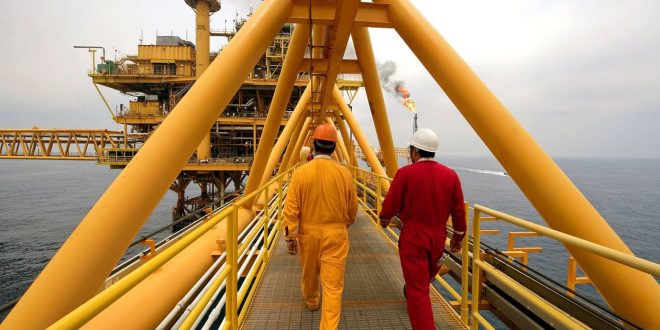Oil prices strengthened on Wednesday after European Union leaders agreed to a phased ban on Russian oil and as China ended its COVID-19 lockdown in Shanghai, which could bolster demand in an already tight market.
Oil benchmarks have marched steadily higher for several weeks as Russian shipments are squeezed by EU and US sanctions and as India and China can only buy so much from Russia, the world’s largest exporter of crude and fuel.
Brent crude was up $1.83, or 1.6%, at $117.46 a barrel at 11:56 a.m. EDT (1556 GMT). US West Texas Intermediate crude gained $1.77, or 1.6%, to $116.45.
Both benchmarks registered gains over May, marking the sixth straight month of rising prices.
EU leaders agreed in principle on Monday to cut 90% of oil imports from Russia by the end of this year, the bloc’s toughest sanctions yet since the start of the invasion of Ukraine, which Moscow calls a “special military operation”.
“The impact of the sanctions becoming formalized is significant,” said Bill Farren-Price, director at Enverus in London. “If they achieve near what they’re intending to, Russia is going to lose about 3 million barrels (in daily exports) and not all of that can be diverted, so it’s quite significant.”
Once fully adopted, sanctions on crude will be phased in over six months and on refined products over eight months. The embargo exempts pipeline oil from Russia as a concession to Hungary and two other landlocked Central European states.
Sources told Reuters that Russian oil companies led by Rosneft this month plan to re-open wells that they had shut because of Western sanctions.
In China, Shanghai’s strict COVID-19 lockdown ended on Wednesday after two months, prompting expectations of firmer fuel demand.
Two OPEC+ sources said on Wednesday that members did not discuss the idea of suspending Russia from the current oil supply deal, after the Wall Street Journal reported on Tuesday that such a move was under consideration.
OPEC+ comprises members of the Organization of the Petroleum Exporting Countries and their allies led by Russia. The group is due to meet on Thursday to set policy.
Some Gulf members had begun planning an output increase in the next few months, the Wall Street Journal reported, citing OPEC delegates. OPEC+ has been criticized for not boosting output more quickly to deal with rising fuel prices.
An OPEC+ technical committee on Wednesday trimmed its forecast for the 2022 oil market surplus by about 500,000 bpd to 1.4 million bpd, sources said.
US crude oil production rose in March by more than 3% to its highest since November, a US Energy Information Administration report showed on Tuesday.
Analysts polled by Reuters expected US crude oil inventories to have fallen last week while gasoline and distillate stockpiles were forecast to have increased. Official government data is expected on Thursday.

 Iran Energy News Oil, Gas, Petrochemical and Energy Field Specialized Channel
Iran Energy News Oil, Gas, Petrochemical and Energy Field Specialized Channel



